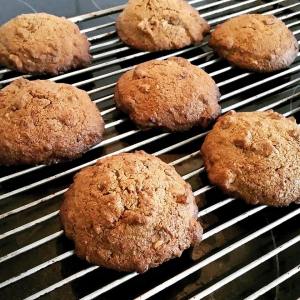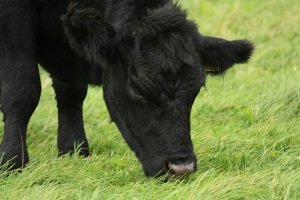And also totally underrated!

Let’s make ‘boring old’ mince more appealing!
Make the most of seemingly boring ground meat by learning about how nutritious it is on it’s own, how to give it a mega nutrient-boost, how to utilise it for meals and make it more interesting, how to source the best types, healthy recipes and lots more in this post!
How to choose the best quality mince

If you have a mincer at home you can buy a huge variety of meat cuts and make amazing mince mixes and then it comes down to choosing the best cuts, taking into consideration health and the environment. While buying mince as-is can be a bit different and more challenging. A packet of mince patties, for example, could contain a whole heap of junk so it’s important to read labels but buying 100% meat is always the best option.
Here are the main types of mince in Australia + recommendations for what to look for:
𝘾𝙝𝙞𝙘𝙠𝙚𝙣: Free-range or organic. Organic is best but can be hard to find. You can make your own by using a food processor to blitz thigh and breast (then it’s not dry like chicken mince tends to be!)
𝙇𝙖𝙢𝙗: Grass-fed or organic. BUT lamb in OZ is usually from regions with lush pasture and grain feed isn’t needed so most lamb mince should be ok but you won’t know unless you ask the farmer/butcher. “Grass-fed” is the safest and because lamb is fatty it’s important it’s not fed on grain otherwise the omega 3 and 6 ratios are out of whack.
𝘽𝙚𝙚𝙛: Grass-fed or certified organic. Most beef in Aus is given grain unless the farmers choose to rain their cattle on pasture only. Organic doesn’t equal grass-fed but it means there were no chemicals used on the farm or the animal.
𝙆𝙖𝙣𝙜𝙖𝙧𝙤𝙤: Wild is best. If farmed then it’s likely to have been fed grains and soy.
Roo mince can be more gristly then other meat and is incredibly lean. I often use it as I would beef mince. Stronger flavour though.
𝙋𝙤𝙧𝙠: Definitely free-range at a minimum or organic if possible. Hard to come by good pork and can be expensive but worth it as conventionally-raised is reeeeeeally unhealthy.
The better quality mince the better it is for your health + for the planet.
Why mince is so healthy

Good quality mince (see previous post) is great for our health. Beef, for example, is a good source of protein, zinc, vitamins B3 and B12, iron, potassium, phosphorus, vitamins B1, B2, and B6 – essential for everyday functioning
Fatty mince (beef and lamb) raised on healthy pasture contain a high Omega-3 to 6 ratio which is ideal.
Kangaroo, an underdog, is low in fat but high in essential minerals like zinc, and vitamins like B12 which helps produce red blood cells and maintain the nervous and immune system, 80% of the RDI for Vitamin B6 which helps to release energy from the protein we eat, Niacin which helps to release energy from food and reduce fatigue, Riboflavin which plays a role in transporting iron around the body, and Thiamine, an important B-group vitamin necessary for normal energy production.
Good quality chicken contains a range B vitamins, high protein levels, folate, Vitamins A, E and K, and a full spectrum of minerals from selenium to manganese. Fatty chicken from healthy farms has a better Omega-3 to 6 ratio too.
Pork too contains a long list of important nutrients like zinc, niacin, phosphorous, riboflavin, B6 and B12, thiamine and zinc.
𝙏𝙝𝙚 𝙣𝙪𝙩𝙧𝙞𝙚𝙣𝙩𝙨 𝙞𝙣 𝙢𝙚𝙖𝙩 𝙖𝙧𝙚 𝘽𝙄𝙊-𝘼𝙑𝘼𝙄𝙇𝘼𝘽𝙇𝙀, 𝙢𝙚𝙖𝙣𝙞𝙣𝙜 𝙩𝙝𝙚 𝙝𝙪𝙢𝙖𝙣 𝙗𝙤𝙙𝙮 𝙠𝙣𝙤𝙬𝙨 𝙝𝙤𝙬 𝙩𝙤 𝙗𝙚𝙨𝙩 𝙪𝙩𝙞𝙡𝙞𝙨𝙚 𝙩𝙝𝙚𝙢 (𝙖𝙨 𝙤𝙥𝙥𝙤𝙨𝙚𝙙 𝙩𝙤 𝙥𝙡𝙖𝙣𝙩𝙨).
What’s your fave type of mince??
Protein: plant vs animal

“The human body is by mass about 65% water and 20% of what is left is protein, meaning most of the non-water weight of our bodies is made from proteins. This includes our muscles and internal organs, and all of our protein comes from food.
There is a near infinite number of possible proteins that can be assembled from amino acids. Amino acids are the body’s building blocks and we have identified just over 500 so far. The human body requires 20 amino acids but there are 9 that are are of special interest to us: these are the ones that are essential for life; without them, we will die. The other 11 we can manufacture in our bodies for use.
The 9 essential amino acids: Histidine, isoleucine, leucine, lysine, methionine, phenylalanine, threonine, tryptophan, and valine.
It’s not just recommended that we get these aminos; it’s vital. All of these essential amino acids are found together in meats and animals based foods. All can be found in plant foods, but rarely at the same time and never in the same proportions as meats.
Plant based proteins are not clean proteins
We consider a protein to be clean if it is complete without other substances which may or may not be healthy or desirable.
Plants fight back
Plants, and especially plant based sources of protein, contain many other compounds which might not be so good for us, because they don’t want to be eaten. While it’s true to say all organisms seek to preserve life, animals are able to run away or fight; their defences against being eaten are external things like claws, scales, teeth, fur and stingers. Plants can’t run away so they’ve evolved to deter being eaten chemically.” – The Ethical Butcher
Plants contain ANTI-NUTRIENTS: Phytates, Lectins, Oligosaccharides, Oxalates, Goitrogens, Tannins, Trypsin inhibitors, Alpha-amylase inhibitors, Gluten, Chaconine.
𝙈𝙞𝙣𝙘𝙚 𝙞𝙨 𝙖𝙣 𝙚𝙖𝙨𝙮 𝙖𝙣𝙞𝙢𝙖𝙡 𝙥𝙧𝙤𝙩𝙚𝙞𝙣 𝙨𝙤𝙪𝙧𝙘𝙚!
The many many ways to use mince

We eat it for brekkie every morning and no, it doesn’t get boring, because we sometimes use different types, in different ways, not the same thing day in day out.
There are just so many ways to use ground meat, here are some, best as paleo versions of course…
Patties
Pasta sauce
Meatballs
Cottage Pie
Lasagne
Nachos
San choi bao
Meatza pizza base
Pizza topping
Koftas
Nuggets
Raw with egg yolk (beef mince)
Chilli con carne
Inside jaffles
Terrine
Cabbage rolls
Phew that’s a lot!
𝙒𝙝𝙖𝙩’𝙨 𝙮𝙤𝙪𝙧 𝙛𝙖𝙫𝙚 𝙝𝙚𝙖𝙡𝙩𝙝𝙮 𝙢𝙞𝙣𝙘𝙚 𝙢𝙚𝙖𝙩 𝙙𝙞𝙨𝙝 𝙩𝙤 𝙢𝙖𝙠𝙚?
My fave mince recipes

We eat mince every single day. Sometimes for multiple meals. We love it, obviously! And we never get sick of it because there are so many ways to use it.
Here are my fave cooking methods + recipes:
– Lamb mince fried on cast on, cooked down so most fat is gone and the meat is crunchy
– Beef mince jerky (or with beef heart added, so much nicer and healthier!)
– Paleo burgers either with cos lettuce leaf ‘buns’ or baked green banana flour buns
– Beef mince, kidney and liver patties with 2 fried eggs for brekkie
– Meat waffles (any mince and eggs)
– Turkey mince patties with Original Mingle Seasoning
– Spaghetti bolognese
– Chicken nuggets (using thigh and breast, not mince)
– Shepards Pie with a savoury mince base (fine diced veg, tomato paste, broth and coconut amino with beef mince) topped with mashed white flesh sweet potato
– Lamb lemon thyme mini meatballs, baked, as a yummy finger food
– Meat muffins – savoury mince of choice with egg, baked in muffin trays, makes a great easy healthy brekkie option to simply heat up in the oven and eat
– Pork mince as a primal meat lovers pizza with my green banana flour pizza base recipe, and paleo bbq sauce on top, along with bacon and GF salami
𝙃𝙚𝙖𝙥𝙨 𝙤𝙛 𝙩𝙝𝙚𝙨𝙚 𝙧𝙚𝙘𝙞𝙥𝙚𝙨 𝙖𝙧𝙚 𝙤𝙣 𝙬𝙚𝙗𝙨𝙞𝙩𝙚
𝗦𝗼𝗺𝗲𝘁𝗶𝗺𝗲𝘀 𝘁𝗲𝗹𝗹𝗶𝗻𝗴 𝘁𝗵𝗲 𝗸𝗶𝗱𝘀 (𝗼𝗿 𝗵𝘂𝗯𝗯𝘆) 𝗮 𝗹𝗶𝘁𝘁𝗹𝗲 𝗳𝗶𝗯 𝗶𝘀 𝗼𝗸 𝘄𝗵𝗲𝗻 𝗶𝘁 𝗰𝗼𝗺𝗲𝘀 𝘁𝗼 𝘁𝗵𝗲𝗶𝗿 𝗵𝗲𝗮𝗹𝘁𝗵!

Clint’s good, he’ll try any food and he’ll eat foods he doesn’t necessarily love but knows are good for him, if he can stand them. But kids and partner’s aren’t always that easy to please when it comes to food. Our niece used to be super fussy with meals, she loved the choc avo pudding I made for sleepovers but would not have had it if she knew avo was in it, because at the time she hated avocado! Eventually she started like it and was happy to know she’d been eating it all those years lol but I was quite ok with her not knowing until that point!
Mince is brilliant food for hiding other healthy foods inside. Such as…
– Adding small amounts of minced up offal to make meatballs, patties etc
– Finely dicing or mushing veggies to add into almost any mince dish, meatballs, patties
– Adding herbs and spices for flavour
– Using bone broth for a mega nutrient-boost instead of stock (tastes like stock but is way better)
– Mixing pure grass-fed beef collagen and gelatin powders in, easiest when there’s some liquid or fat that’s liquidy
– Egg is NOT essential when making rissoles, patties and meatballs but egg (pastured) is super nutritious so adding even just the yolk into mince meals for those who won’t eat eggs as is, is a great option
What other ways can healthy ingredients be added to / hidden in mince?
Have you had to be a bit tricky like this for your family members?
Special bonus: new recipe!

Easy Peasy Pasta Sauce!
A much easier and quicker version of my original paleo bolognese recipe, this pasta recipe only needs a few ingredients and minimal cooking.
I hope you like it!
Click here for the brand new recipe
I hope this information and our perspectives and experiences help you and your family on your journey to better health! Please comment if you have any questions.
Aimee
Primal Health Coach for Women
Visit our website: Primal Influence
Follow us on socials: Facebook + Instagram + TikTok

Disclaimer:
This disclaimer governs your use of Under the Primal Influence Blog. By using this website, you accept this disclaimer in full. If you disagree with any part of this disclaimer, do not use Under the Primal Influence Blog or any affiliated websites, properties, or companies. We reserve the right to modify these terms at any time. You should therefore check back periodically for changes. By using this website after we post any changes, you agree to accept those changes, whether or not you have reviewed them.
All information and resources found on Under the Primal Influence Blog are based on the opinions of the author unless otherwise noted. All information is intended to motivate readers to make their own nutrition and health decisions after consulting with their health care provider. I am not a doctor, lawyer, psychiatrist, therapist, or your mother, and I don’t play one on the internet.
The author of this site encourages you to consult a doctor before making any health changes, especially any changes related to a specific diagnosis or condition. No information on this site should be relied upon to determine diet, make a medical diagnosis, or determine treatment for a medical condition. The information on this website is not intended to replace a one-on-one relationship with a qualified health care professional and is not intended as medical advice.
NO information on this site should be used to diagnose, treat, prevent or cure any disease or condition.
None of the posts and articles on Under the Primal Influence Blog may be re-printed without express written permission of the author. Primal Influence will respond to written requests to re-print parts of posts and excerpts/quotes (10% or less) may be reprinted with attribution as long as all links are left intact.





















